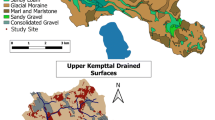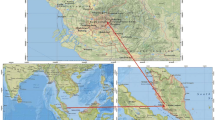Abstract
A methodology is developed to relate urban growth studies to distributed hydrological modeling using an integrated approach of remote sensing and GIS. This linkage is possible because both studies share land-use and land-cover data. Landsat Thematic Mapper data are utilized to detect urban land-cover changes. GIS analyses are then conducted to examine the changing spatial patterns of urban growth. The integration of remote sensing and GIS is applied to automate the estimation of surface runoff based on the Soil Conservation Service model. Impacts of urban growth on surface runoff and the rainfall–runoff relationship are examined by linking the two modeling results with spatial analysis techniques. This methodology is applied to the Zhujiang Delta of southern China, where dramatic urban growth has occurred over the past two decades, and the rampant urban growth has created severe problems in water resources management. The results revealed a notably uneven spatial pattern of urban growth and an increase of 8.10 mm in annual runoff depth during the 1989–1997 period. An area that experienced more urban growth had a greater potential for increasing annual surface runoff. Highly urbanized areas were more prone to flooding. Urbanization lowered potential maximum storage, and thus increased runoff coefficient values.
Similar content being viewed by others
Author information
Authors and Affiliations
Rights and permissions
About this article
Cite this article
WENG, Q. Modeling Urban Growth Effects on Surface Runoff with the Integration of Remote Sensing and GIS. Environmental Management 28, 737–748 (2001). https://doi.org/10.1007/s002670010258
Published:
Issue Date:
DOI: https://doi.org/10.1007/s002670010258




